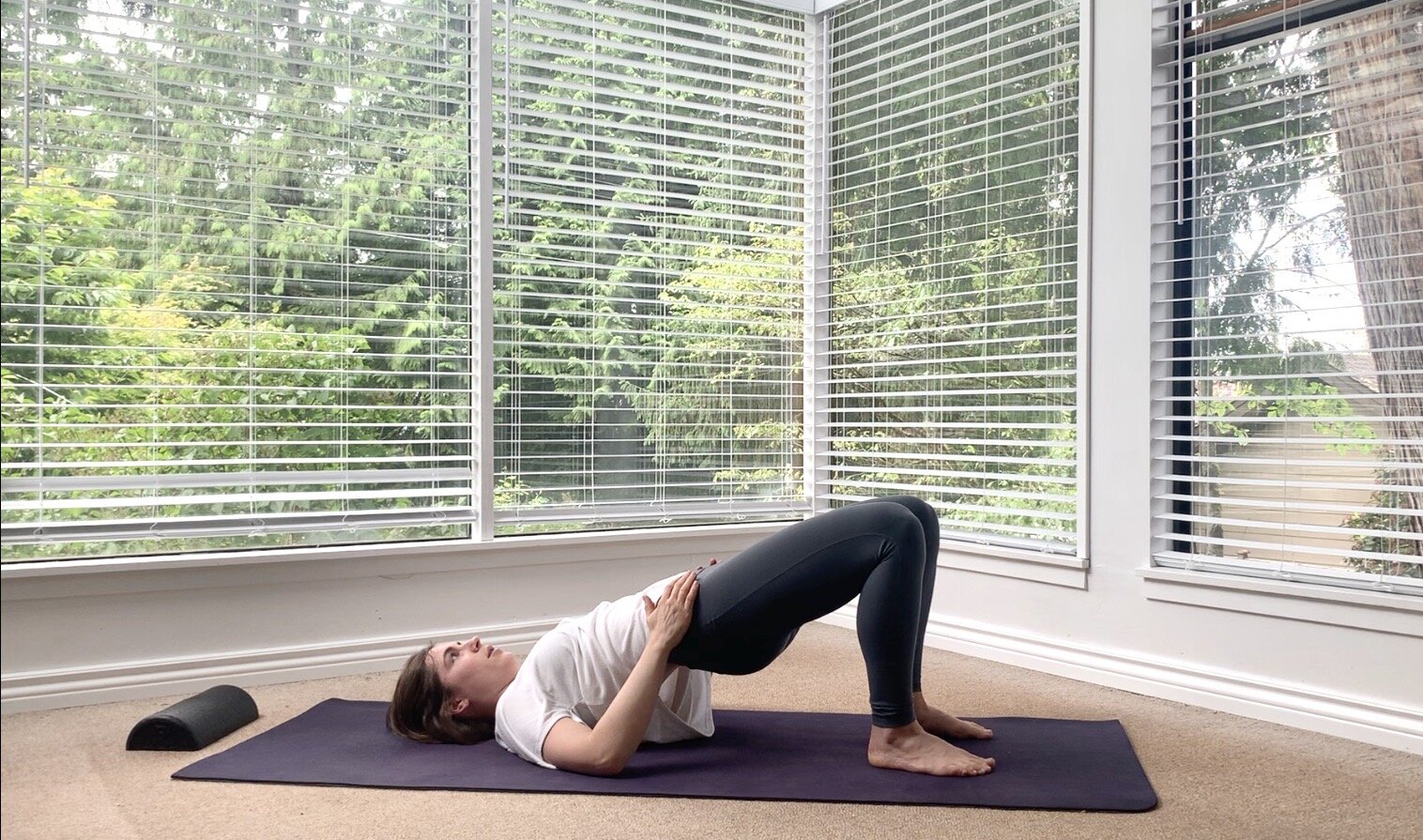Is your pelvic floor a trampoline or a hammock?
Pelvic Floor Pain, Incontinence and Prolapse
When referring to pelvic floor dysfunction this encompasses pain, incontinence and prolapse. All three conditions are multifactorial and unfortunately, kegels are usually not the answer. I know this might come as a shock to some of you… This is because dysfunctions are often due to hypertonic muscles (muscles that are too tight). If you just do kegels, you are further increasing the tension in the muscles that are too tight and never actually releasing that tension.
Picture your pelvic floor like a trampoline.
You want your pelvic floor to be evenly tensioned in every direction and you want it to have a little spring up and down. If you are sitting or standing with your butt tucked, your sacrum comes forward and that trampoline becomes more of a hammock. This hammock causes some muscles to get really tight and other muscles to get weak and stretched out.
What are some ways to get your pelvic floor to function more like a trampoline again?
Release extra abdominal tension
Diaphragmatic Breathing
Diaphragmatic breathing uses your diaphragm, your pelvic floor and all of your abdominal muscles to work together to fill your lungs with air, while keeping your upper chest relaxed. It will give improve your core stability, regulate your nervous system, reconnect you to your core and pelvic floor and it the first core exercise you can do after giving birth
Try to practice diaphragmatic for at least 5 minutes a day. An easy way to incorporate this is by doing this before your daily workout, or try to incorporate it while you drive. Diaphragmatic breathing is so important because it will help to release pelvic floor tension.
For more information check out this blog post all about breathing.
Stop sucking in your stomach
When someone is constantly engaging their core or consciously/unconsciously sucking in their stomach it creates many problems and your pelvic floor takes a huge beating. I can’t tell you how many patients I have had that thought that they were actually supposed to constantly engage their core. If you are constantly tensing your abs or sucking in your stomach (even if just slightly) you are creating so much extra weight that your pelvic floor has to hold up.
If you are recently postnatal, you may still need to focus on engaging your core when doing core exercises and lifting because your core needs to be retrained after giving birth. But after a few months your core will know when to be turned on and when to be relaxed, you don’t need to actively contract it all day long.
Continue working on your posture
Better sitting and standing posture will create proper pelvis alignment that will encourage your pelvic floor to work more like a trampoline. Remember if your butt is tucked while sitting or standing, your sacrum moves forward and your pelvic floor resembles more of a hammock.
For more information check out The Posture Course or check out how important your posture is this this Blog.
Strong glutes are good for pretty much everything
Glute strength and posture are closely connected. Strong glutes will help to pull your sacrum back, allowing your pelvic floor to be more like a trampoline. Doing your glute strengthening exercises are great, but you need to make sure you are using your glutes when standing, bending and squatting all day long.
Check out my YouTube channel, specifically Hip Flow Part 1 for a great start into getting your glutes stronger!
Other factors
Lastly, we need to address external factors that are affecting your pelvic floor, shoes. Having any sort of heel on your shoe changes the forces going through your body and significantly affects your pelvic floor. Walk around your house barefoot as much as possible, start wearing shoes that do not have a heel and save those high heels for only special occasions.
Check out this all about transitioning into a more minimal shoes




